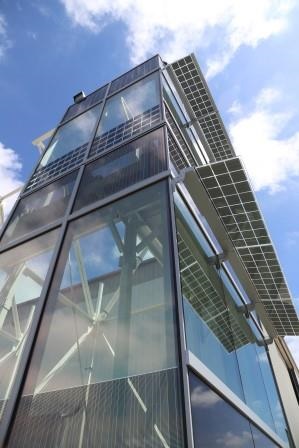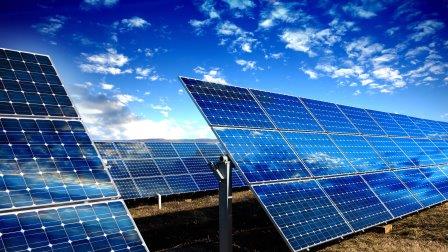

In this Edition
Construction
Management Specialists
111 Pine Street, Suite 1315
San Francisco, CA 94111
(415) 981-9430 (San Francisco office)
6518 Lonetree Blvd., Suite 164
Rocklin, CA 95765
(916) 742-1770 (Sacramento office)
9449 Balboa Avenue, Suite 270
San Diego, CA 92123
(619) 518-5648 (San Diego office)
8538 173rd Avenue NE
Redmond, WA 98052
(206) 571-0128 (Seattle office)
2063 Grant Road
Los Altos, CA 94024
(650) 386-1728 (South Bay office)
7083 Hollywood Blvd., 4th Floor
Los Angeles, CA 90028
(424) 343-2652 (Los Angeles, CA office)
www.TBDconsultants.com
Our nearest star, the Sun, produces energy that is equivalent to 100 billion one-megaton nuclear bombs going off every second, and while only a small portion of that energy reaches our planet, it is still sufficient to meet 35,000 times the electrical energy needs of the world.

Sometimes this is referred to as ‘free energy’, but of course that is not true. Taking PVs (photovoltaics) as the obvious example, there is cost involved in mining and processing the silicon and other materials, costs of installing and maintaining the installation, and finally there is the cost of disposing of the potentially hazardous material at the end of its life. But it has been calculated that, even taking the most pessimistic assumptions, the PV industry is now at least carbon-neutral by now, and probably has been carbon-negative for a decade or more.
The most obvious sign of the growth of solar power has been the increase in the amount of residential roofs that are covered with PVs. That growth has been spurred by grants that are now being threatened, but the cost of PVs has come down so far (about a 65% drop over 5 years), and continues to drop. They are now at the point where they are becoming economical in many regions, even without grants and tax credits.
Solar installations on commercial properties have not seen the same growth, and suffer the problem of often not having a large roof area to take traditional PVs. In cities, a high-rise building is going to have a small roof compared to its total floor area, and that roof space could be needed for HVAC equipment and other uses. Even so, commercial solar projects have been growing about 30% per annum recently. Many different ways are being found to incorporate PVs into the façades of buildings, as illustrated by the mockup below, prepared by Walters & Wolf in conjunction with Solaria. This shows the use of PVs in sun shading, spandrels, and even curtain wall vision panels.

Solar power of buildings can be both active and passive. In the mockup above, the PVs would be active solar power, but those same curtain walls and sun shading could be used to provide passive solar power, utilizing and regulating the heat gain from the Sun.
However, the largest source of solar power has been utility solar generation, and almost 80% of recent solar installations have been of this type, driven partly by a desire to protect the environment, but also by the fact that solar can now have an edge economically.
The improvement in power storage technologies has been another driver for all types of solar installations, because the power is not required only when the Sun is shining, and even then it can be blocked by clouds, seriously reducing power production. Local community power systems are also being planned and developed, which will help avoid the average 7% power loss over long-distance transmission lines, and should make power supply more resilient in the event of natural disasters.

Solar does present potential problems for utilities. As more residential and commercial solar installations come online, including local community systems, the demand for utility power will lessen. They will have to maintain the same infrastructure though, which is likely to lead to a need to increase charges, making solar installations even more attractive. That is a problem the utilities are well aware of, and planning for. And the decrease in traditional power plants creates a positive impact on the environment, with the reduction of greenhouse gases.
One prediction is that 50% of the world’s energy will be met by renewable source by the year 2040, and solar power will be a major part of that. So the future is sunny!
Thanks to Solaria for their assistance in preparing this article
In this article we look at the increasingly affordable and popular method for surveying new and existing buildings, and the different uses the technology is being put to.
The stock markets have been hitting new highs, and the economy has been continuing to grow. Here we look at where we are, and what the prospects appear like for the near future.
Design consultant: Katie Levine of Vallance, Inc.